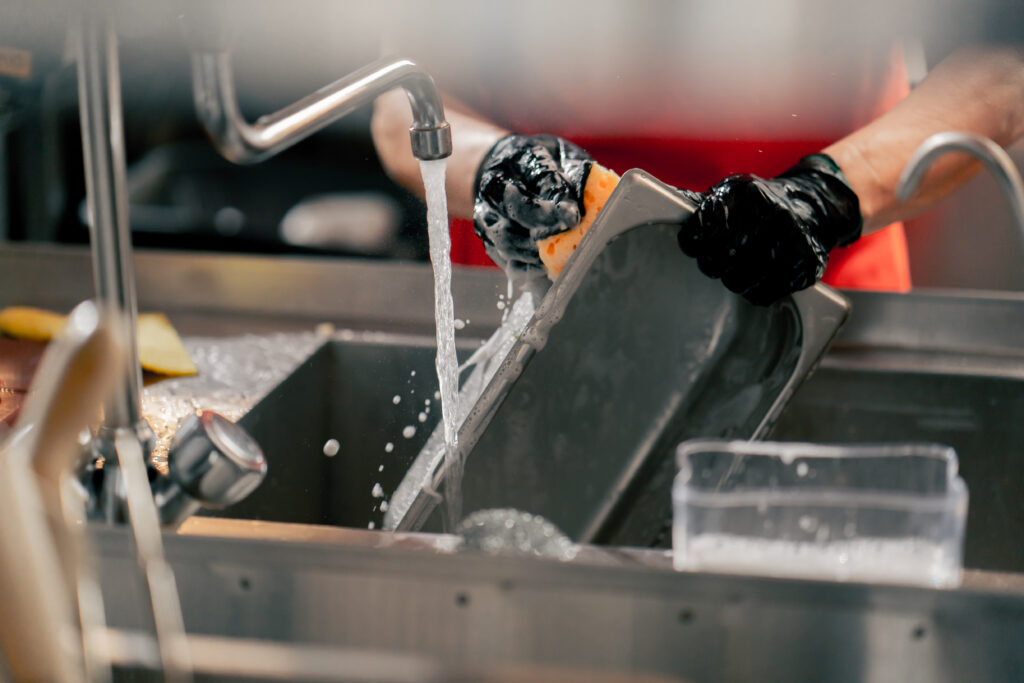What is an SSOP?
Seamless manufacturing requires a network of accurately timed systems and routines for consistent results. Consequently, facilities have dozens to hundreds of written records that specify what needs to be done, when, and how. An SSOP is one example of this.
A Standard Operating Procedure (SOP) is a written set of step-by-step instructions for a repeated process. Manufacturers create SOPs to ensure that complex tasks are completed routinely and uniformly. They create SOPs for every standardized task, from administrative duties to machine maintenance and facility sanitation.
Hence, a Sanitation Standard Operating Procedure (SSOP) is the written procedure for a sanitation-related task, or a task that prevents contamination or adulteration of a food product. You can write them for a piece of equipment, several pieces of equipment in a process, an environmental area, or as a Master Sanitation Plan for the whole facility.
The FDA and FSIS require SSOPs for all HACCP plans, and they’re a fundamental element of a Food Safety Plan. You must also maintain daily records of their implementation so you can provide the records to governing bodies upon request.
An SSOP specifies:
- what is to be cleaned,
- how it is to be cleaned,
- how often it’s to be cleaned, and
- what records are used to monitor the procedures.
How to create an SSOP
Each operation has special circumstances, processes, and sanitation standards depending on its product and environment. As such, all SOPs vary from one facility to another. So, it’s important to customize Sanitation SOPs for each facility too.
Here’s a checklist of elements to include in an SSOP:
- Company Name
- Date (effective date or date of most recent update)
- Version ID
- SSOP Number (optional: Some companies assign numbers to their SSOPs or combine the number and version. Example: SSOP #2, version 4 may be SSOP: 2.04)
- Procedure Title
- Scope or Introduction (what is covered by the program)
- Frequency (how often this process is carried out)
- Procedures: Step-by-step instructions for the process. Use a logical, sequential order and add notes as needed for clarification. Specify chemicals (type, brand name), chemical concentration, time, and temperature. Break into sections for multiple tasks.
- Recordkeeping: Identify which forms or logs are used.
- Person responsible for the SSOP content and updates. Include signature and date lines.
- Page numbers
If you don’t want to write out your own SSOP or aren’t sure where to start, you can use our free template.
Enter your email below to download a free fillable template:
You can see an SSOP example by Penn State here.
How to Implement and Maintain an SSOP
In addition to reviewing your SSOP annually, be sure to update it whenever yu change the processes or chemicals used.
There are two regulations for SSOP maintenance:
- You must routinely evaluate the effectiveness of all SSOPs implemented in your production operations.
- You must revise them as needed to maintain effectiveness and address any recent changes in facilities, equipment, utensils, operations, or personnel.
If you determine that the SSOPs aren’t effective or are out of date, you must modify, sign, and date them. You don’t have to notify the FSIS or FDA of these changes.
What if there is a sanitation issue?
Whether you or the FSIS determine that your SSOPs failed to prevent contamination, you must correct them.
There are three parts to corrective action. You must meet and record all three of these requirements each time product contamination occurs:
- Dispose of contaminated products appropriately.
- Restore sanitary conditions.
- Prevent the recurrence of product contamination.
The third step involves re-evaluating and modifying the specific procedures that failed and caused contamination.
You may be exempt from the third step if your Master Sanitation Plan includes an effective product reconditioning program. Inspection personnel must verify that you have implemented the overarching procedures involved to restore products to wholesome, unadulterated conditions.

